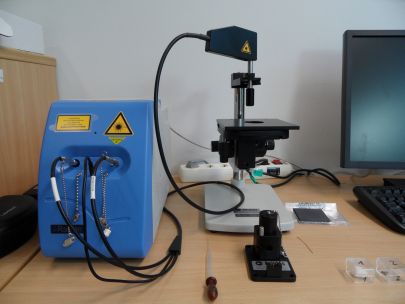Raman-Spectroscopy on Solids
Supervisor: Dr. Chris Sturm
The Raman effect describes the inelastic scattering of light in matter. This effect is for example used to investigate the vibrational modes, with which the light interacts.
In this experiment, different crystals are investigated by means of Raman spectroscopy. Besides the relation between material properties and vibrational energies, particularly the invluence of the symmetry properties on the Raman spectrum is investigated. For that, the use of Raman tensors is introduced. From these, selection rules are to be derived which are applied experimentally. The influence of the light polarization and the orientation of the sample on the measured spectra are investigated for that.
For the measurements, a portable spectrometer is used: Raman-Spectrometer Model "i-RamanTM BWS415-532S"
by the manufacturer B&W Tek.

